Got Lava? Iceland’s Native Stone Used in Fascinating Ways
Karin Kirk
usenaturalstone.com
Photos © Karin Kirk
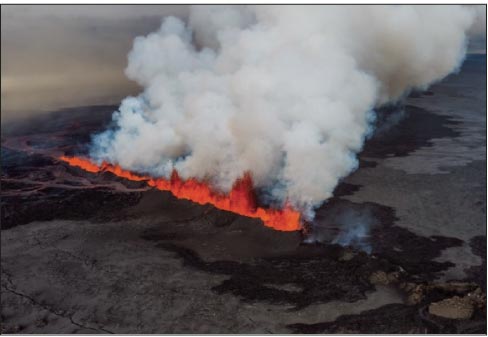 |
|
© Einar Gudmann via Creative Commons |
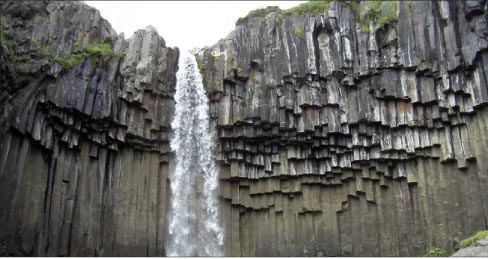 |
|
Above: Svartifoss Waterfall, and a spectacular reveal of hexagonal basalt columns |
After a long flight over the North Atlantic, the coastline was finally visible through the airplane window. The landscape became more apparent as we descended - vast plains of bare rock, with tufts of steam wafting up from geothermal vents.
The plane touched down amid a barren landscape, making me wonder if in fact we had gone off course and mistakenly arrived on the Moon. My seatmate looked troubled. “Are we here?” she asked, with concern in her voice.
“Yes,” I replied with a big smile. “Welcome to Iceland.”
Iceland’s Backstory: Plate Tectonics and Basalt
Iceland is a unique circumstance of geology.
The island sits atop one of Earth’s tectonic boundaries.
Plate tectonics refers to the way that continent-sized rafts of solid rock, called ‘plates,’ float on hot, fluid material below. Earth’s plates move slowly, at an average rate of just one inch per year. Almost all of the geologic action on our planet happens at the edges of plates – where adjacent plates bump together, scrape past each other, or rip apart into two pieces. These activities create things like mountain ranges, earthquakes, and volcanoes.
Iceland straddles the Mid-Atlantic Ridge.
Here, the Earth’s crust is being pulled apart; the North American plate and the Eurasian plate are moving off in opposite directions as the Atlantic Ocean widens. There is a distinct seam that runs up the middle of the ocean floor, where the crust gets yanked apart, then fills in with lava. It yanks apart some more, and then more lava oozes out. In this manner, the entire ocean crust is built. The lava rock is basalt, an igneous rock that is dark grey or black. All the ocean basins, everywhere in the world, are underlain by basalt.
Iceland’s section of the Mid-Atlantic Ridge is a bit hyperactive.
It’s particularly hot and it erupts a lot of lava. So much lava, in fact, that it has built itself up above sea level.
As a geologist, I am fascinated by the notion that you can observe the same process that normally happens at the bottom of the ocean, but up on land.
In a place called Thingvellir, you can wander among lava flows and rifts in the landscape, and easily see how the place is being pulled apart.
You can also see volcanoes large and small, hot springs, geysers, steam vents, and fumaroles. Iceland is like a geologists’ candy store.
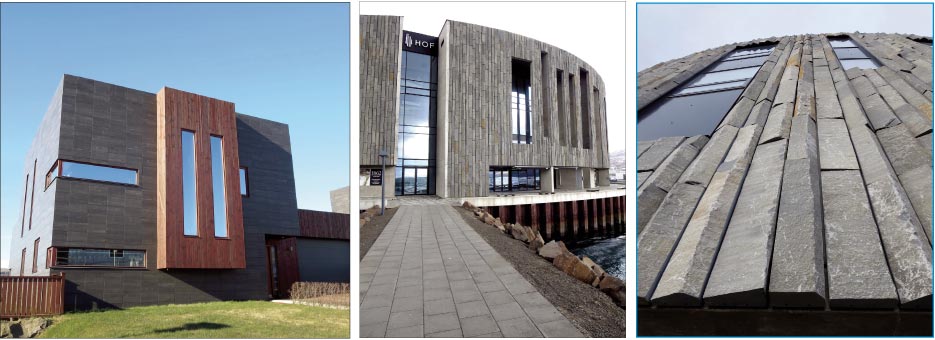 |
|
The Hof is a conference center and performing arts venue in Iceland’s vibrant northern city of Akureyri. This prominent building is a stone-clad cylinder, situated right on the harbor. Its sleek Nordic design gives a nod to local materials. Only up close do you realize the stone cladding is made of basalt columns, sliced lengthwise. Standing underneath the building and looking up reveals the shape of the columns. This cubic, modern residence outside the capital Reykjavik is clad in honed basalt. The mirrored windows almost look like cut-outs that poke through the building to reveal the vivid blue sky behind. |
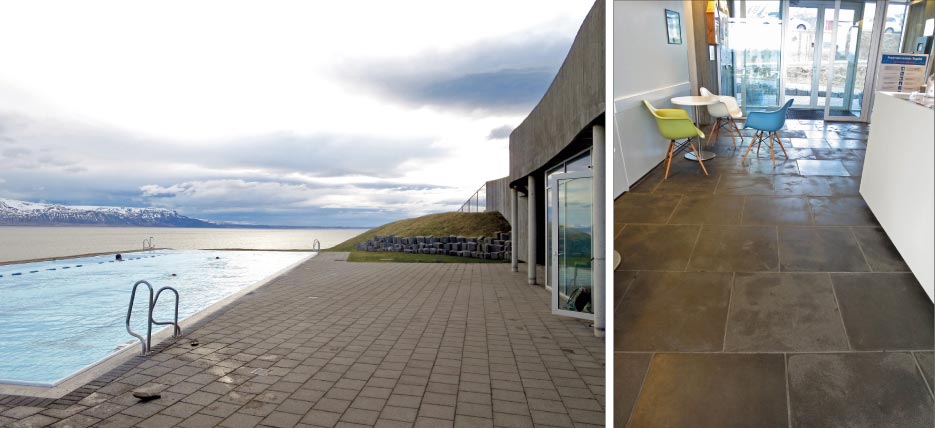 |
|
Above, Left: If you are wondering what the dreamiest place on Earth looks like, here it is. This infinity pool at Hofsós gazes right out into a fjord. A key distinction is that the fjord is icy cold, while the pool is geothermally hot. Above, Right: The floors inside the Hofsós spa are laid with large format, honed basalt tile. The use of natural stone throughout the facility evokes the volcanic nature of the hot water. |
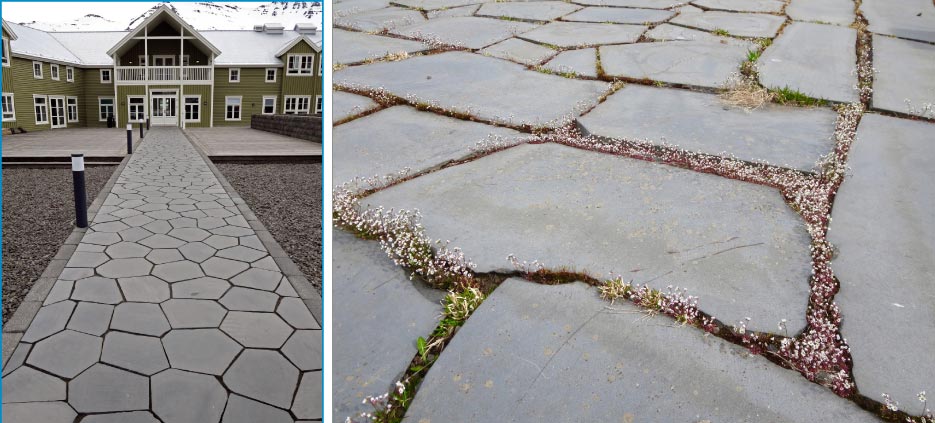 |
|
Above, Left: Basalt lava naturally cools into hexagonal columns. This sidewalk at the Sigló Hotel is made from slices of basalt columns. Above, Right: Basalt does not naturally cleave into thin layers. These flagstones were likely made by cutting slices from a basalt column. Alpine wildflowers have sweetly colonized the joints between the stones. |
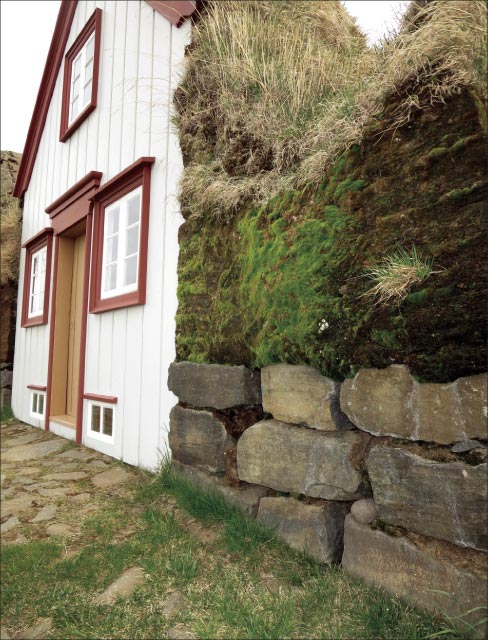 |
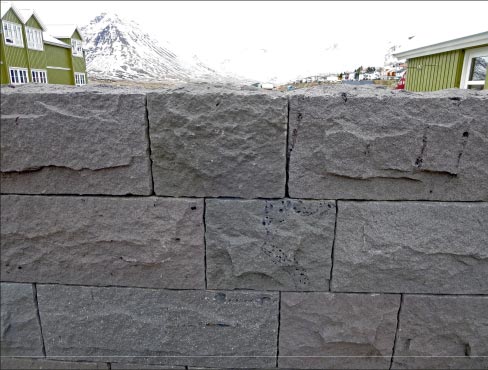 |
|
At first glance this harbor retaining wall looks like ordinary modular concrete block. But a closer inspection reveals that it’s actually lava rock. The telltale sign is the presence of Swiss-cheese-like holes, caused by gases in the lava. |
As with everywhere else along the Mid-Atlantic Ridge, the lava that erupts out of the rift is basalt. You may be familiar with Absolute Black, Premium Black, and similar fine-grained, dark-colored stones. These are commercial versions of basalt (or its close cousins). Iceland is built of layer upon layer of cooled basalt lava flows. Icelanders are justifiably proud of their volcanoes, their wild landscape, their insane weather, and their native lava rock. It makes perfect sense that they’d use this stone in a variety of ways, which is not only a pragmatic use of an abundant material, but also ties their architecture to the natural environment that makes Iceland so special.
On a recent trip to Iceland, I set out to find examples of how the native stone was used. I was happily surprised at the wide range of uses I encountered, from historic settlements to starkly modern new construction.
Basalt Columns Have Their Own Architecture
Before we dive into the architectural uses of basalt lava, it’s worthwhile to understand the characteristic pattern formed by this stone. Basalt lava flows tend to cool and crack into hexagonal columns, like a giant bundle of pencil-shaped stone. This distinctive rock forms the backdrop for many of Iceland’s iconic waterfalls. Basalt columns are a familiar theme, and it was especially fun to see how Icelanders incorporated them into their designs.
With the geologic fundamentals covered, let’s dive into a photographic tour that I call “101 uses for lava.” The first building we’ll visit is the Hof, an architecturally unique performing arts center in the northern part of the island.